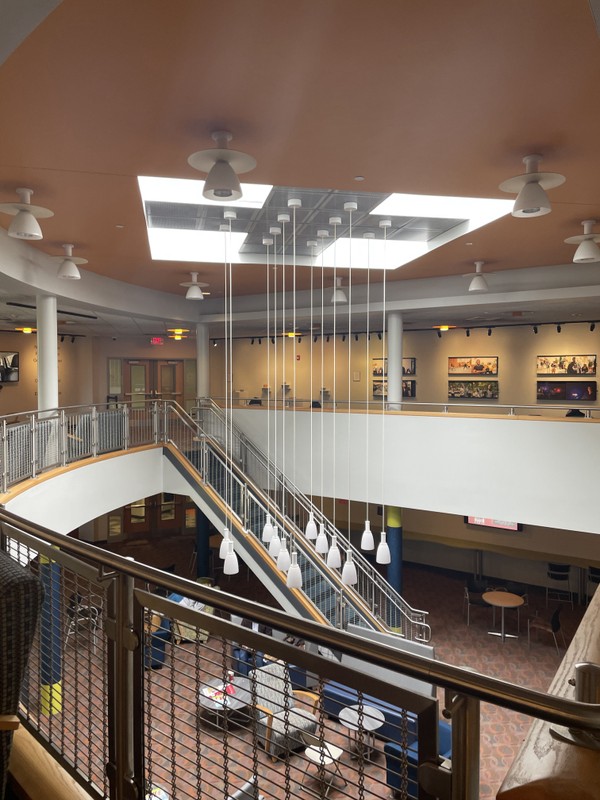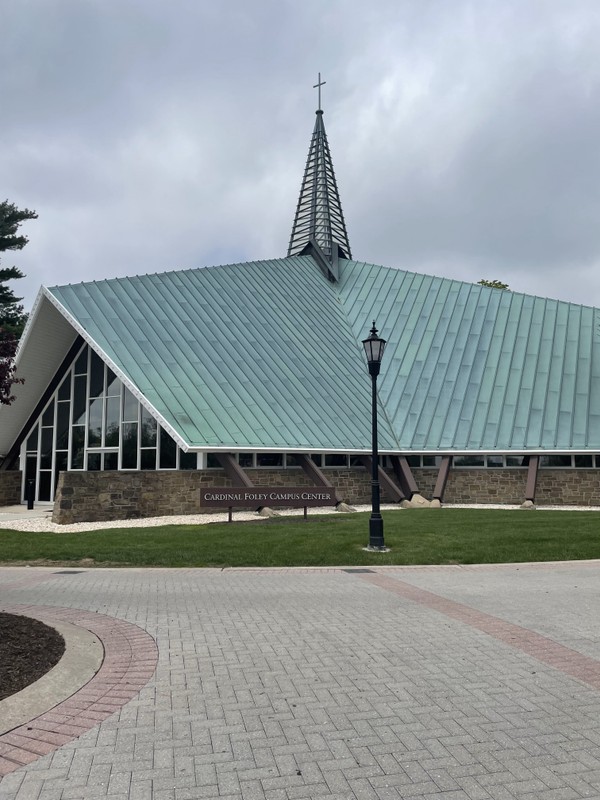Maguire Campus, Saint Joseph's University
Introduction
Text-to-speech Audio
Episcopal Academy’s campus was a fine addition to the growing Saint Joseph's University. While the purchase was a strain on the wallet of Saint Joseph's it allowed for unimaginable growth as an institution. The campus had a 58% increase in overall campus size with the purchase Included in the land are baseball fields, which the campus did not have yet, even though it had a baseball team. There was also another regular sports field which would help expand the school into other D1 sports and club sports. There was an emphasis on the amenities of the campus, in an effort to make the school more residential. Most of the buildings on the Maguire campus were in use by the Episcopal Academy, the former owner. There were also 250 parking spots which would help a crucial problem that all college campuses struggle with. There was also the Cardinal Foley campus center in the middle of Saint Joseph's Maguire campus which stands as a symbol of pride for all Hawks. The story of Cardinal Foley remains an inspiration to everyone who knows it, and the building is representative of this. The addition of their campus allowed Saint Joseph’s to grow massively in influence and ability to provide their students with a bountiful education and experience.
Images
Annenberg Library

Merion Hall

Cardinal Foley Center

Backstory and Context
Text-to-speech Audio
The purchase of the Episcopal Academy’s Merion campus was a hefty cost for Saint Joseph’s but was considered a necessary step in the transition to a full-time residential school. The purchase was agreed upon in 2005 and was then completed in 2008 after fundraising and gaining donations. The sale would be 38 acres for over $50 million if $30 million of state aid was provided, Saint Joseph’s also had around $10 million dollars in renovations prepared for Episcopal's old campus. With the addition of the academy, the university had gotten complaints about unsupervised students in Wynnefield, to which the university made plans for two new dorms. Saint Joseph’s was lucky enough to have some donors help with the costs of the campus, but not cover all of it. In September of 2005, Frannie and Jim Maguire offered $10 million as a gift for the expansion. Not even a year had passed before another donation from Nancy and Brian ’69 of $10 million came in during April of 2006. Then after the campus had been renamed to James J. Maguire ’58 campus, James himself cuts the ribbon and donates another $5 million to the cause. Then the final donation came from Margaret and Paul ’70 Hondros, who wanted this money to be pledged to the new Kinney Center for Autism Education and Support.
Episcopal Academy was on the current Maguire Campus from the 1920s up until the purchase by SJU in 2005. During that time many of the buildings used by SJU were standing during the time of EA. The current Merrion Hall was Episcopal Academy’s library and Upper and Middle School’s classrooms, and during that time it was called Annenberg Library. EA’s cafeteria and auditorium now live as the current Paris Hall, and its cafeteria no longer exists, it is now the Men’s Rowing workout room, and the auditorium is in a state of disrepair. The SJU Kinney Center was once the EA science center. And the Current O’Pake Recreation Center was formally known as The Dixon Athletic Center. Episcopal Academy’s chapel, known as Christ Chapel, was desanctified when SJU acquired the campus and now stands as the Cardinal Foley Center.
The Cardinal Foley Center is the focal point of the Maguire campus. It was originally designed to be the welcome center for Saint Joseph's University before the use of the cardinal residence and was named as such because of the inspirational story of Cardinal Foley. Cardinal Foley graduated from SJU in 1957, during which he became class president and president of Alpha Sigma Nu, the Jesuit Honor Society. After graduation, he entered the priesthood and rose to local and international renown. In 2007 he was elevated to the College of Cardinals by Pope Benedict XVI. But his most notable work came during his time as archbishop during the papacy of Pope John Paul II. Foley was heavily involved with spreading Pope John Paul II’s message and even was a spokesperson during the pontiff’s visit in October of 1979.
Sources
Durso, Thomas. “The Right Reasons.” SJU Magazine, 2008.
Lunardi, Joseph M. “Two Men, One Mission.” SJU Magazine, 2012.
Shuman, Jake. “Six Years Later: A Trip Back through the Merion Campus.” EScholium, April 14, 2018. http://www.e-scholium.org/2013/11/12/six-years-later-a-trip-back-through-the-merion-campus/.
Woodall, Martha. “For Sale: 30 Acres: w/View.” Philadelphia Inquirer, January 18, 2007.
Written by Emily Cronin; research: Richard P. Smith. “Episcopal Academy.” Lower Merion Historical Society. Accessed April 30, 2022. http://lowermerionhistory.org/?page_id=143177.
